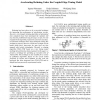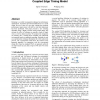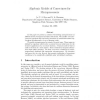24 search results - page 1 / 5 » Accelerating Retiming Under the Coupled-Edge Timing Model |
97
Voted
ISVLSI
2002
IEEE
15 years 5 months ago
2002
IEEE
Retiming has been shown to be a powerful technique for improving the performance of synchronous circuits. However, even though retiming algorithms of polynomial time complexity ha...
ICCAD
2001
IEEE
15 years 9 months ago
2001
IEEE
Retiming is a widely investigated technique for performance optimization. It performs powerful modifications on a circuit netlist. However, often it is not clear, whether the pred...
100
Voted
ASPDAC
2009
ACM
15 years 7 months ago
2009
ACM
— Recent advances in statistical timing analysis (SSTA) achieve great success in computing arrival times under variations by extending sum and maximum operations to random variab...
103
Voted
ISCAPDCS
2003
15 years 1 months ago
2003
Many computation-intensive iterative or recursive applications commonly found in digital signal processing and image processing applications can be represented by data-flow graph...
118
click to vote
FAC
2000
15 years 6 days ago
2000
In this paper we present a method of describing microprocessors at different levels of temporal and data abstraction. We consider microprogrammed, pipelined and superscalar proces...



